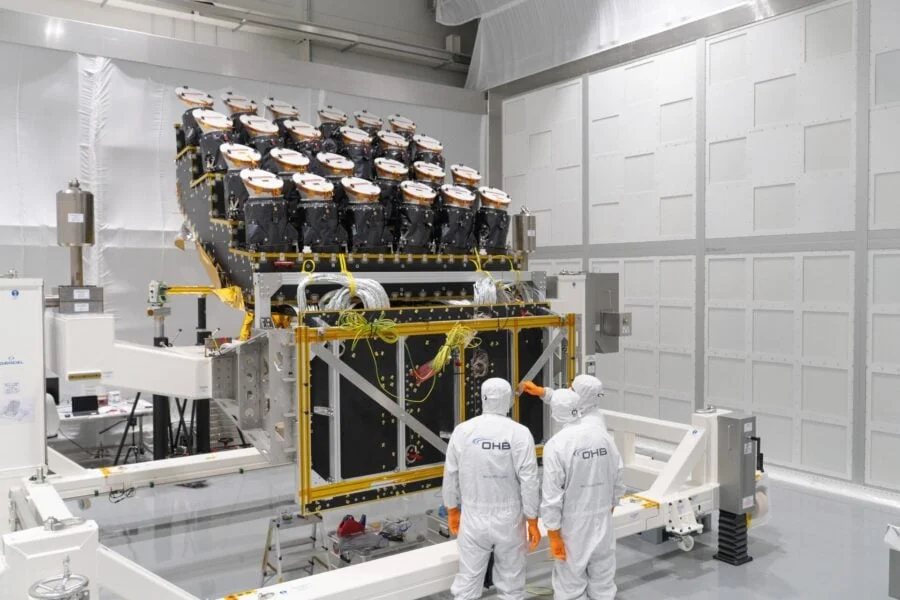
ESA’s Plato Spacecraft: 24 Eyes Ready to Hunt for Earth-Like Planets
The European Space Agency (ESA) is nearing completion of its Plato (PLAnetary Transits and Oscillations of stars) spacecraft, a mission dedicated to hunting for terrestrial planets orbiting distant stars. This ambitious project has reached a critical milestone with the successful installation of 24 out of its 26 specialized cameras.
What makes Plato unique? Instead of relying on a single telescope, it uses an array of 26 cameras working in concert. This allows Plato to monitor approximately 5% of the sky simultaneously, offering a significantly wider field of view compared to previous exoplanet missions. Imagine it as having 26 highly sensitive eyes constantly scanning the cosmos.

Thomas Walloschek, ESA's Plato Project Manager, emphasized the importance of this step: "This activity is one of the most critical in building the satellite. The cameras are delicate elements that must be attached to the spacecraft’s supporting structure with great accuracy, to ensure that they are very precisely aligned."
The spacecraft's optical bench, where these cameras are mounted, is a crucial component, maintaining the precise alignment needed for the mission’s success. The 24 "normal" cameras are arranged in four groups of six, each pointing at a slightly different part of the sky, creating overlapping fields that maximize observational capability.
How will Plato find new worlds? It will detect the minuscule changes in stellar brightness caused by planets transiting, or passing in front of, their host stars. This transit method, proven effective in previous missions, is enhanced by Plato's multi-camera approach, boosting both sensitivity and the observable area.
Beyond just finding planets, Plato is designed to detect stellar oscillations, subtle vibrations that reveal vital information about a star's internal structure, composition, and age. This data will provide unprecedented insights into the stars that host planets, allowing scientists to determine the size, mass, age and habitability potential of discovered exoplanets.
The final two "fast" cameras, designed to capture images at a higher frequency, will be installed soon. These cameras will focus on the brightest stars, providing real-time targeting data to ensure Plato maintains the precise pointing required to monitor hundreds of thousands of stars continuously.
Currently under assembly at OHB in Germany, Plato is scheduled to launch in 2026 and will be sent into a halo orbit around the Sun-Earth Lagrange point-2 (L2). This location offers a stable thermal environment and unobstructed view of the sky.
Plato's mission promises to fundamentally transform our understanding of planetary systems and potentially identify the most promising candidates for habitable worlds. What exciting discoveries await us as Plato opens its 26 eyes on the universe? Share your thoughts and predictions in the comments below!